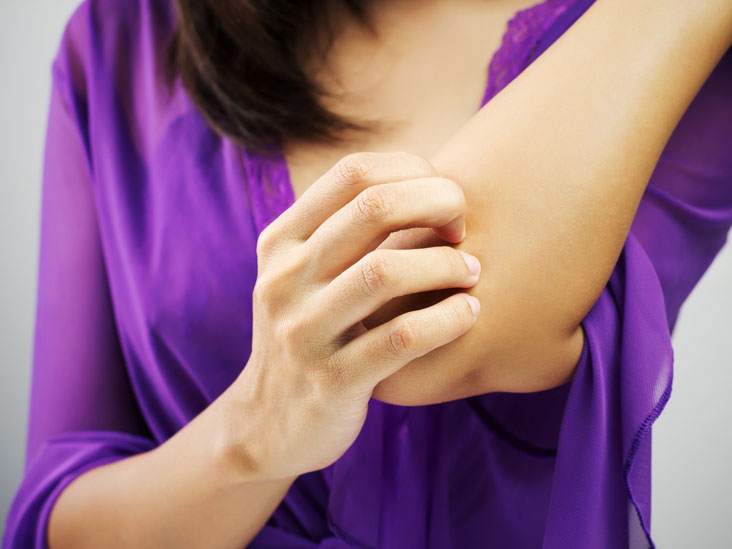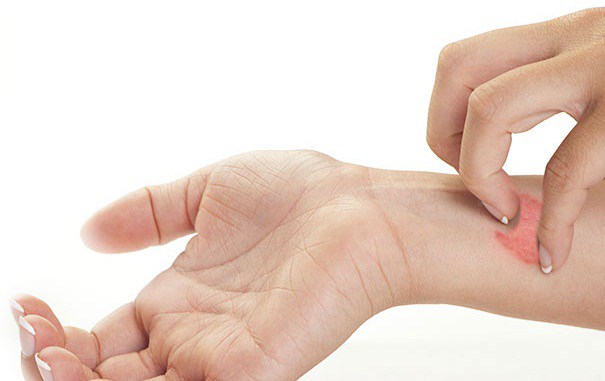
Ringworm (tinea or dermatophytosis) is a type of fungal infection of the skin that has nothing to do with worms. The infection can occur just about anywhere on the body and has different names depending on which part of the body it affects.
Symptoms of ringworm depend on the location of the infection.
They typically include:
- Itchy skin
- Red, scaly, or cracked skin
- A ring-shaped rash (from which ringworm gets its name)
- Hair loss in the affected area (if hair was present)
The symptoms tend to appear between 4 and 14 days after the skin meets the fungi that cause ringworm.

Ringworm typically starts out as red or pink skin patches (or spots) that may be either flat or slightly raised. In this initial stage, the sores may be moist, but more often they’re dry, scaly, and itchy.
Ringworm typically starts out as red or pink skin patches (or spots) that may be either flat or slightly raised. In this initial stage, the sores may be moist, but more often they’re dry, scaly, and itchy.
Over time, the rash will increase in size. Next, the center of the rash will start to clear up, leaving a ring-shaped infection with a red, raised border and a healthy-looking center (although the center may remain scaly and red).
If you scratch the rash you may break the skin, which could lead to a bacterial infection.
Preventing Ringworm
- Do not share clothing, sports gear, towels, or sheets. If you think you have been exposed to ringworm, wash your clothes in hot water with special anti-fungus soap.
- Wear slippers or sandals in locker rooms and public bathing areas.
- Shower and shampoo well after any sport that includes skin-to-skin contact.
- Wear loose-fitting cotton clothing. Change your socks and underwear at least once a day.
- Poor hygiene is one factor so keep your skin clean and dry. Always dry yourself completely after showers or baths, drying your feet last.
- If you have athlete’s foot, put your socks on before your underwear so that fungi do not spread from your feet to your groin.
- Playing with pets. Cats and dogs, and especially kittens and puppies, are common carriers, according to the National Institutes of Health (NIH), and you can contract ringworm by petting or grooming them. Touching other infected animals, such as guinea pigs or farm animals like lambs and cows, can also lead to an infection. Sometimes an animal’s infection looks like an area where the fur is patchy or scaly, but the signs may not always be visible to you. Be sure to take your pet to the veterinarian if you suspect they’ve got an infection.
- If you or someone in your family has symptoms, it is important to treat ringworm right away to keep other family members from getting it.